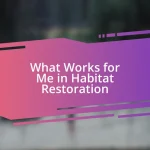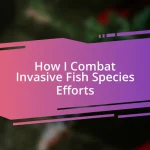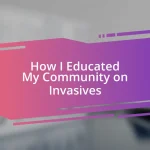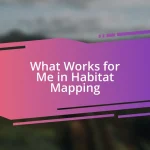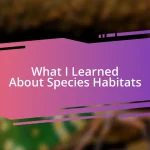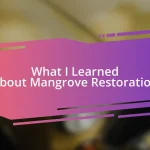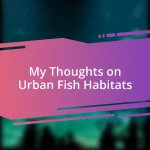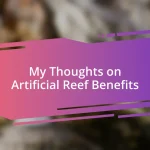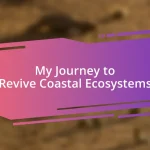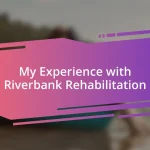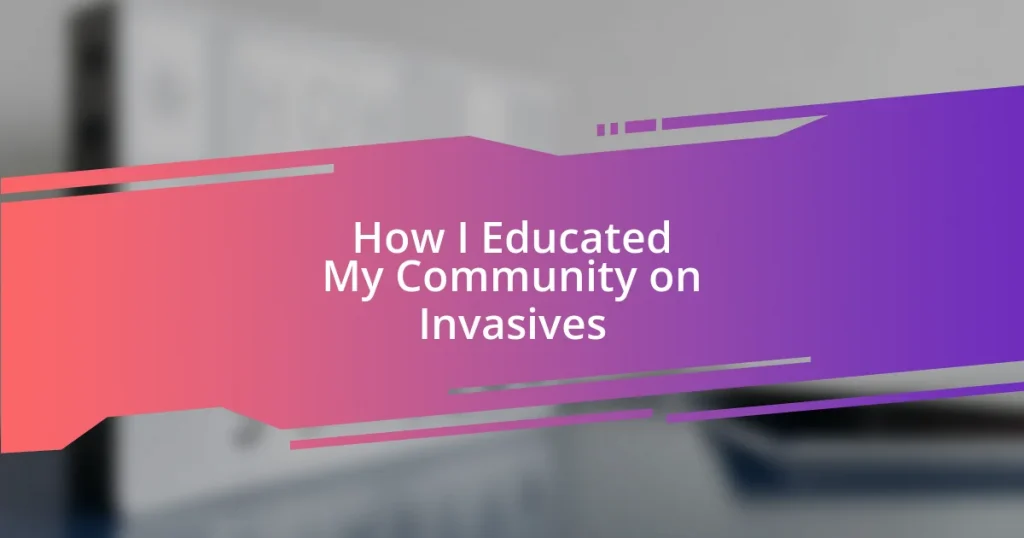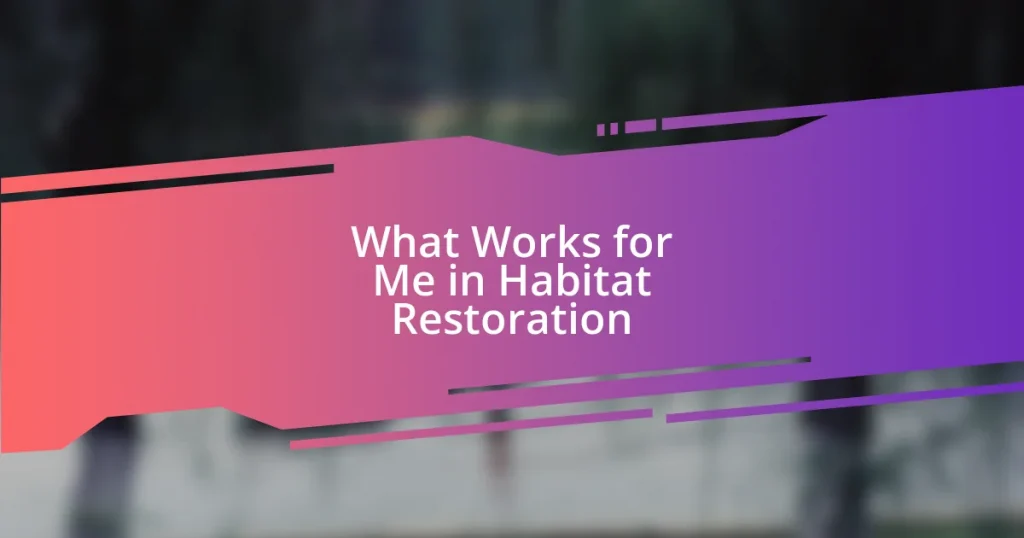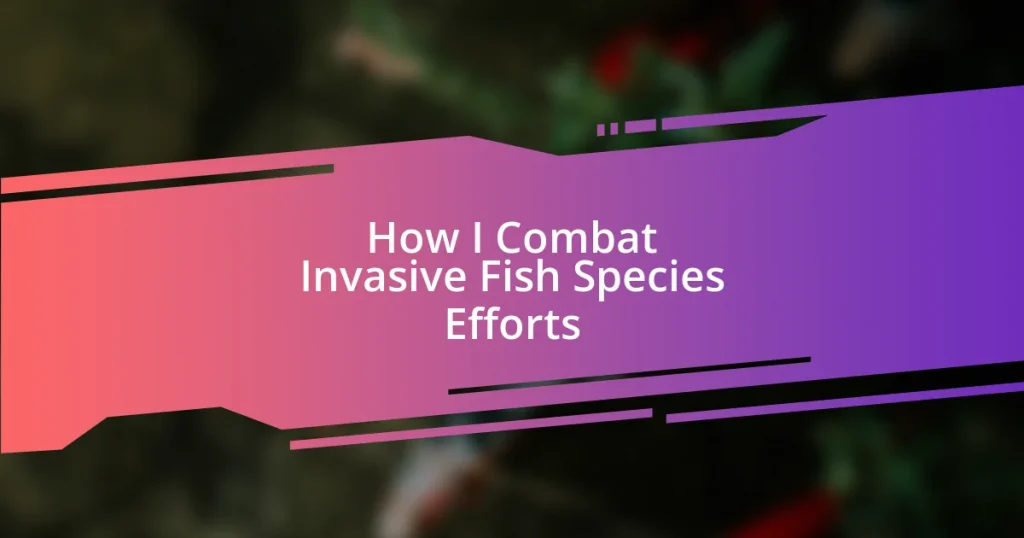Key takeaways:
- Community awareness of invasive species can be significantly enhanced through engaging educational materials, workshops, and events that foster participation and personal connections.
- Utilizing social media effectively, such as sharing infographics and interactive challenges, encourages active community involvement and broadens the reach of educational efforts.
- Measuring the impact of educational initiatives through feedback, social media metrics, and surveys reveals increased awareness and inspires individuals to take action against invasive species in their environments.
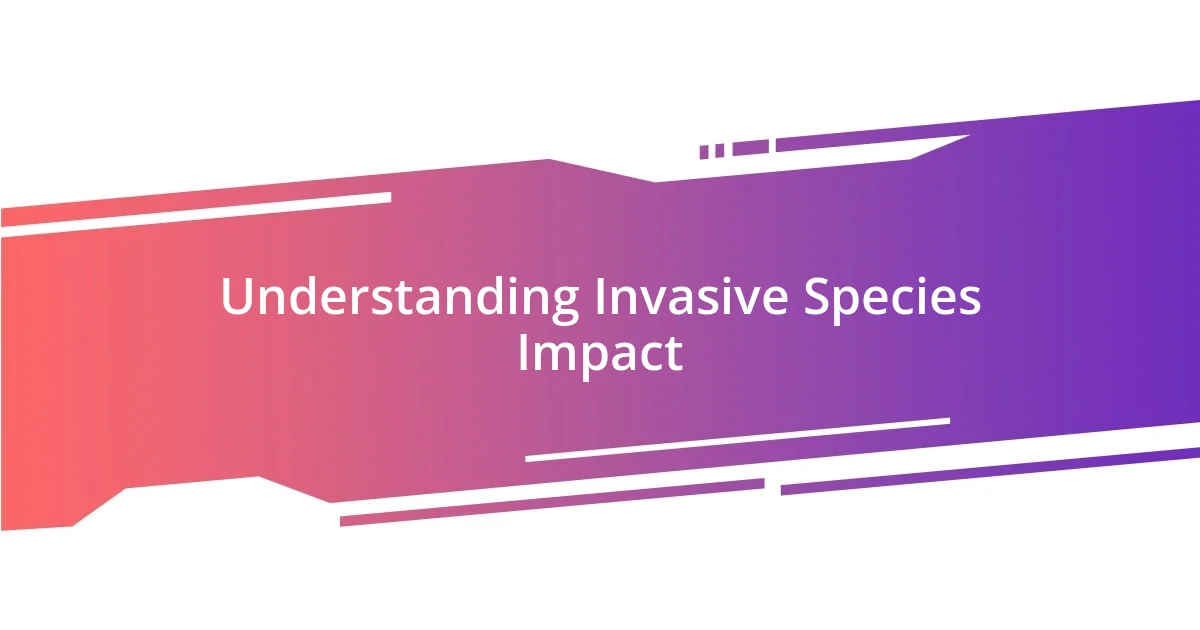
Understanding Invasive Species Impact
Invasive species can disrupt entire ecosystems, often leading to the decline of native species. I still remember the day I walked through a local park and noticed how certain plants seemed to crowd out others, completely transforming the landscape. This transformation made me wonder: how many native species had been lost because of these invaders, and what stories did they hold?
The impact of invasive species isn’t just about biology; it’s about the communities that thrive or struggle alongside them. I spoke with a local farmer who shared how an invasive weed had drastically reduced his crop yields, affecting not only his livelihood but also the local economy. It hit me hard to realize that the implications of these species ripple out into people’s lives, shaping our food systems and economies in ways we often overlook.
When we consider the ecological balance, invasive species can act like bullies, overpowering and pushing out the more vulnerable native plants and animals. I think back to a volunteer event where we removed Japanese knotweed from a creek bed; seeing how quickly it took over made me question: what would happen if we allowed such dominance to persist? This experience deepened my understanding of why educating our community about these impacts is so crucial—not just for the environment but for our shared future.
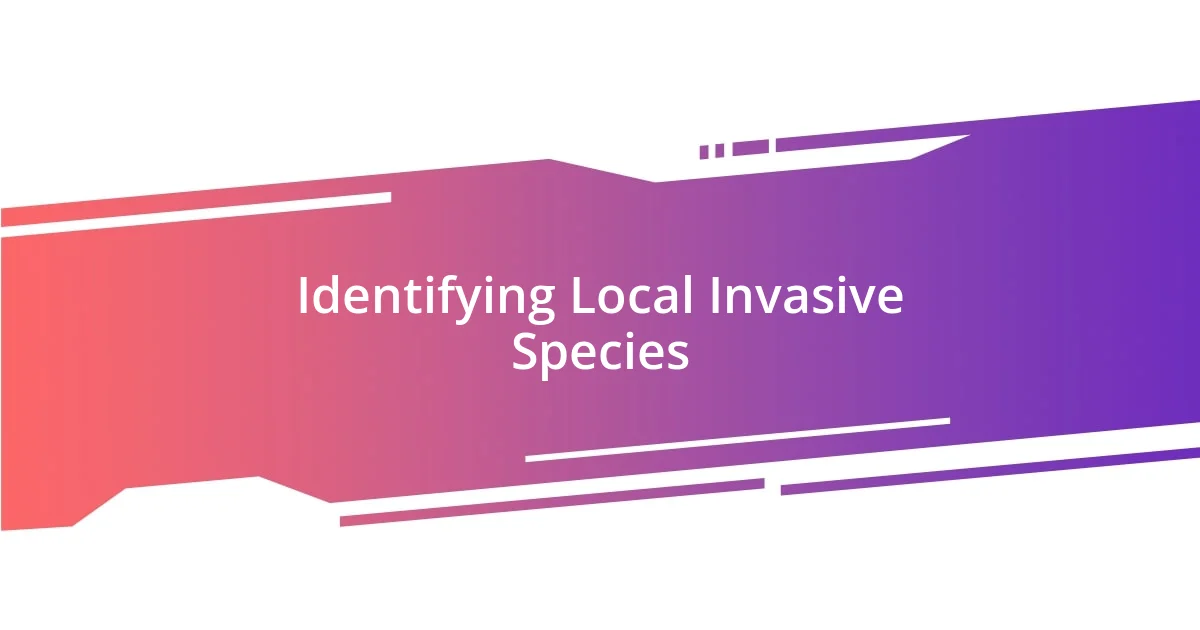
Identifying Local Invasive Species
Identifying local invasive species is a crucial step in taking action against their spread. During one of my neighborhood walks, I stumbled upon a bush with vibrant purple flowers that I later learned was an invasive species called butterfly bush. Initially, I was captivated by its beauty, but I soon realized that this attractiveness can be deceiving—these plants can choke out native vegetation. Recognizing the signs early can make a significant difference in managing their impact.
Here are some common characteristics that help identify local invasive plants:
- Rapid growth: They often outpace native plants in terms of growth rate and spread.
- Aggressive reproduction: Many produce an abundance of seeds or can propagate through fragments.
- Thick growth habit: They frequently form dense stands, making it hard for other plants to thrive.
- Lack of natural predators: Without native threats, they can easily become dominant in new environments.
- Distinctive leaves or flowers: Their unique shapes or colors often catch the eye, leading to misidentification as desirable plants.
Understanding these traits expands not only our knowledge but also our ability to protect the environment we cherish. Remembering the day I noticed that butterfly bush reminds me of the responsibility we hold in preserving our local ecosystems.
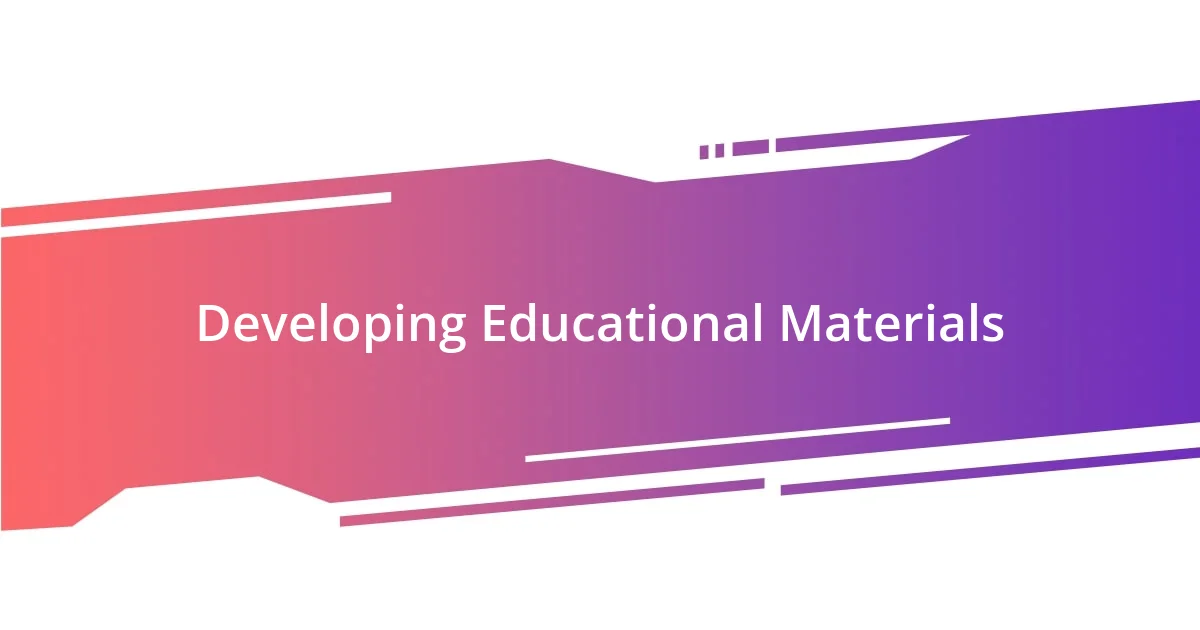
Developing Educational Materials
Developing educational materials was crucial for spreading awareness about invasive species in my community. I remember the excitement I felt when I created a simple brochure that highlighted the features of local invaders. To my surprise, feedback showed that people appreciated the visual appeal and easy-to-read format. It taught me that blending engaging graphics with clear language can effectively capture attention and convey vital information.
As I dug deeper into this process, I decided to host workshops that included hands-on activities. One memorable session involved using crafts to create models of invasive and native plants. Watching kids transform simple materials into representations of ecosystems was heartwarming. This approach not only educated but also ignited curiosity and sparked conversations about environmental stewardship.
To ensure our materials reached a broader audience, I compared different formats. I found that infographics were particularly effective for quick learning, while detailed guides appealed to more engaged readers. My experiences taught me that having diverse educational resources allows community members to learn at their own pace, and the variety keeps the material fresh and engaging.
| Material Type | Effectiveness |
|---|---|
| Brochure | Visually engaging, quick reference |
| Infographic | Ideal for quick learning and sharing |
| Workshops | Hands-on experience fosters engagement |
| Detailed Guide | In-depth learning for enthusiastic participants |
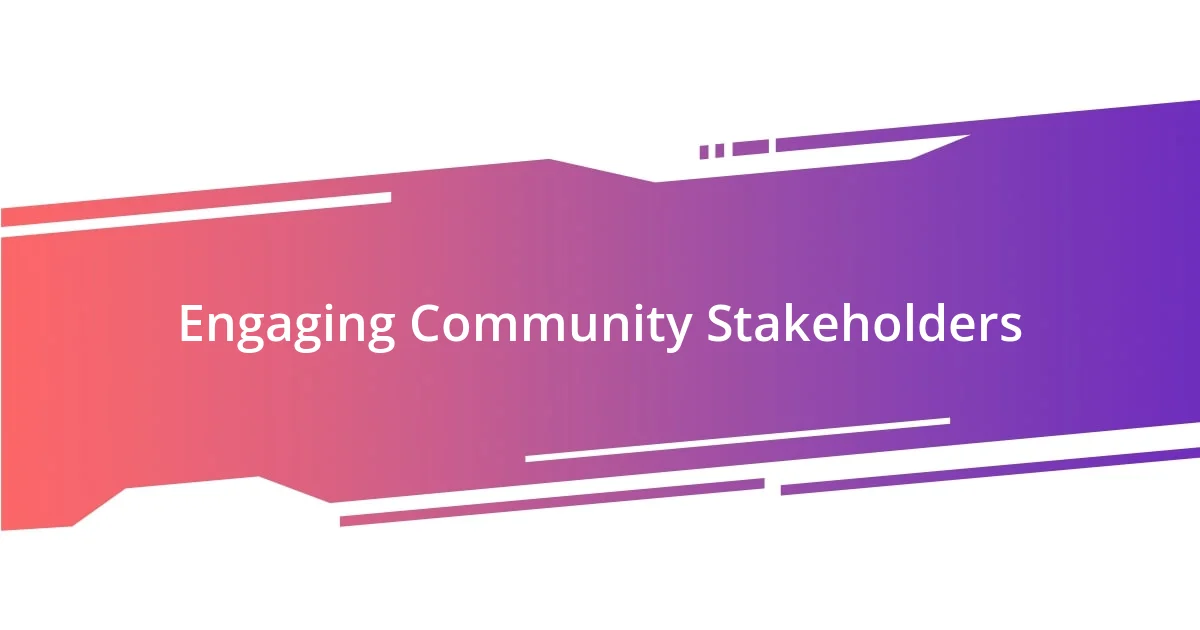
Engaging Community Stakeholders
Engaging community stakeholders was a turning point in my journey towards educating others about invasive species. I vividly remember the day I reached out to local gardening clubs, thinking, “What better way to spread the word than through those who cherish plants?” This approach was intentional; gardeners have intimate knowledge of their environment and can be powerful allies in recognizing and managing invasives.
Through these interactions, I discovered the power of personal narratives. During one meeting, a fellow member shared a story about how her garden was overtaken by Japanese knotweed, ultimately sparking a passionate discussion about prevention tactics. It was enlightening to see how our shared experiences bonded us and transformed fear into proactive measures. I realized that listening to stakeholders’ stories not only fostered a deeper connection but also highlighted the impact invasive species had on their lives.
Moreover, forming partnerships with schools added another layer of engagement. I coordinated a project where students could conduct local surveys of invasive species in their neighborhoods, and the excitement was palpable. As one student exclaimed, “Wow, I didn’t know that plant was harmful!” I felt a sense of joy seeing them take ownership of the issue, which reassured me that our efforts were planting seeds of awareness that would grow in their hearts and minds for years to come. By actively involving stakeholders and valuing their contributions, I found a community ready to join the fight against invasives.
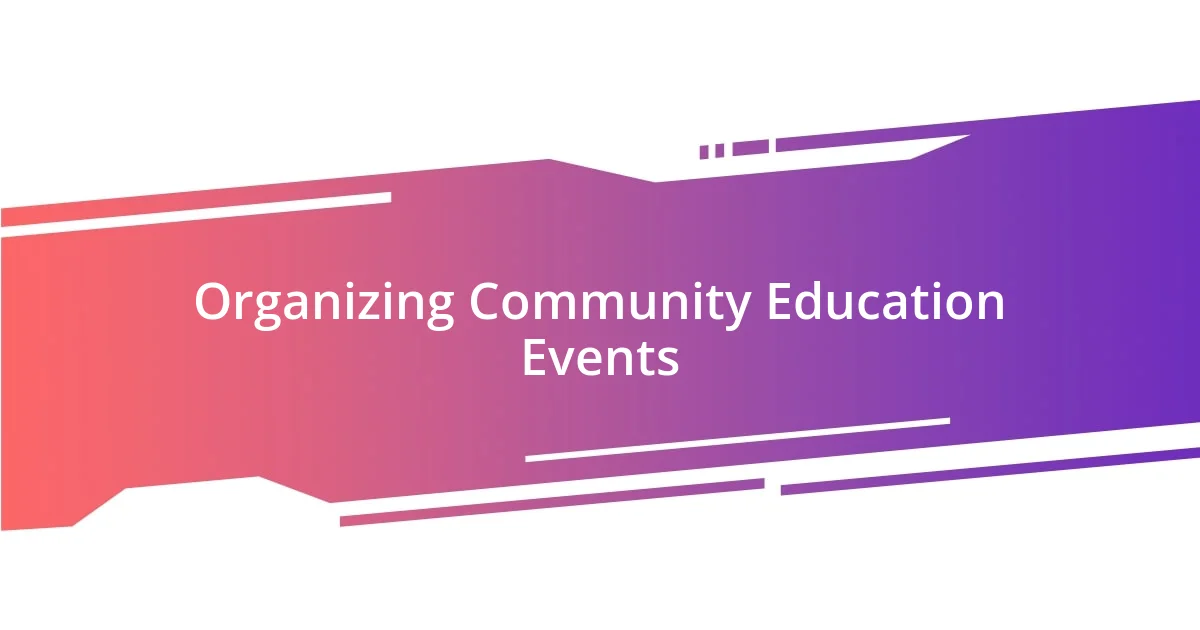
Organizing Community Education Events
Organizing educational events in the community was a journey filled with excitement and personal connections. I recall the first time I set up a local event in our town park. As I arranged tables and displays, I felt a mix of nerves and anticipation. Would people show up? When the crowd began to gather, I realized the power of simply providing a space for people to learn together. It was a moment that reinforced my belief in the importance of community engagement.
One event that truly stood out was a “Invasive Species Awareness Day” that I coordinated along with local environmental groups. We featured expert speakers, hands-on demonstrations, and even a plant identification scavenger hunt. Seeing families laughing and participating together made my heart swell. It wasn’t just about educating; it was about creating a shared experience that fostered camaraderie. When kids grasped the concept of distinguishing invasive plants from native ones, I could almost hear their wheels turning—curiosity ignited and friendships forming.
Throughout this process, I discovered that leveraging local resources added depth to our events. Collaborating with local parks and nature centers meant utilizing their expertise and spaces, which drew in more participants. I often pondered how much more successful these gatherings could be with diverse voices at the table. When we combined our experiences and resources, it turned out we were not just educating about invasives but also weaving a tighter, more informed community fabric. This synergy was exhilarating—can you remember a time when working together made a difference? I know I do every time I see our community take steps toward healthier ecosystems.
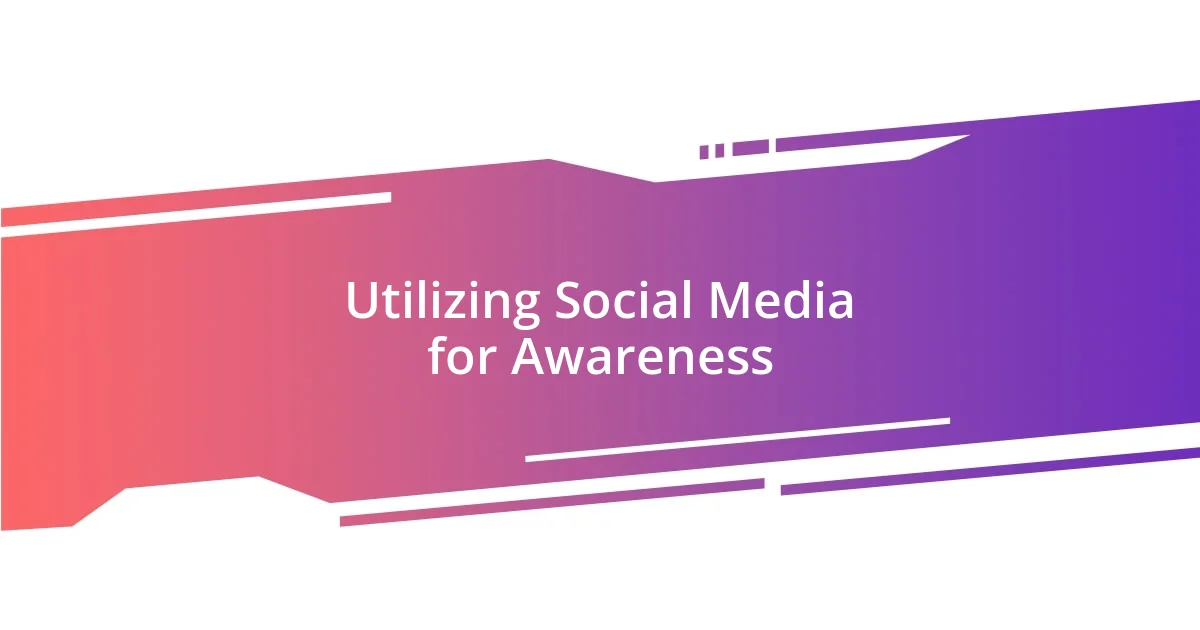
Utilizing Social Media for Awareness
Utilizing social media effectively is a game changer when it comes to spreading awareness about invasive species. I often find myself scrolling through local groups on platforms like Facebook or Instagram, where I can share engaging infographics and videos about the impacts of invasives. It’s fascinating how a simple post can ignite conversations, leading to unexpected insights. I sometimes wonder, “How many people have learned something new just because they stumbled upon my post?” The answer quickly becomes evident in the comments and conversations that follow.
One standout experience involved a short video I created featuring an invasive species commonly found in our area. I shared it on several platforms, and the response was overwhelming; people began tagging their friends and sharing their own stories of encounters with the plant. I remember feeling a rush of joy as I read about the community members identifying the invasive in their own backyards. It was a reminder of how social media can bridge the gap, transforming passive observers into active participants in the conversation. Isn’t it amazing how a digital platform can unite us around a shared cause?
I also utilized social media for interactive campaigns, like a “Species of the Week” challenge, inviting followers to post pictures of invasives they found. It was rewarding to see individuals engaging directly with their environment, showcasing their efforts to educate their neighbors. Honestly, every time someone posted their findings, I felt a sense of collective achievement. Could there be a better way to build community awareness than empowering individuals through their own discovery? The energy and enthusiasm were palpable, proving that, with a little creativity, social media can turn awareness into action.
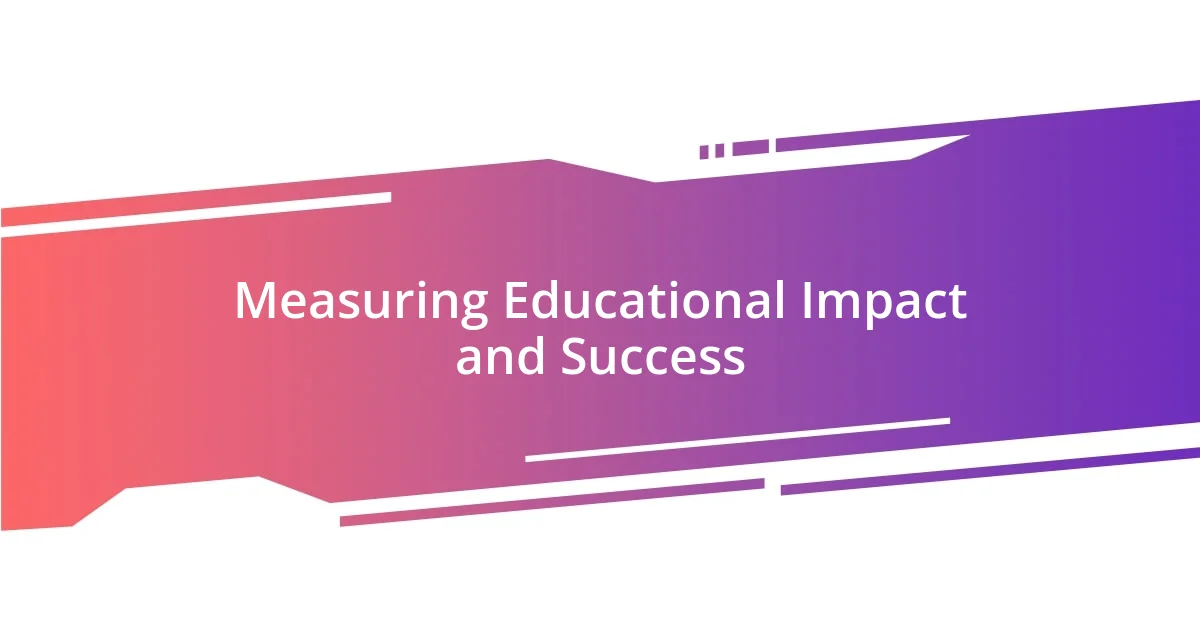
Measuring Educational Impact and Success
Measuring the educational impact of my community efforts felt like deciphering a puzzle, and I often reflected on how to gather useful feedback. After each event, I would ask participants simple questions about what they learned. I remember one person saying, “I never realized how quickly invasive species can spread. This has changed the way I look at my garden.” Moments like these fueled my motivation and highlighted our collective growth.
To gauge broader success, I also tracked social media engagement metrics, like likes, comments, and shares, which revealed a stunning increase in awareness. Looking back, I remember a post about a notorious invasive that not only reached hundreds of people but sparked a lively discussion. It made me wonder: is there ever a limit to how much we can learn when information is shared openly? Those interactions served as a testament that our efforts were resonating, expanding the reach of our educational impact.
Ultimately, I utilized surveys to evaluate the overall sentiment towards invasive species and our community’s knowledge. Once, a participant expressed, “I’m now more inclined to educate my neighbors about this.” That feedback touched me deeply, illustrating that our initiatives planted seeds of knowledge that could grow beyond a single event. Isn’t it rewarding to know that education can inspire action in others? Each response was not just data; it felt like a heartfelt commitment to a healthier, more informed community.
